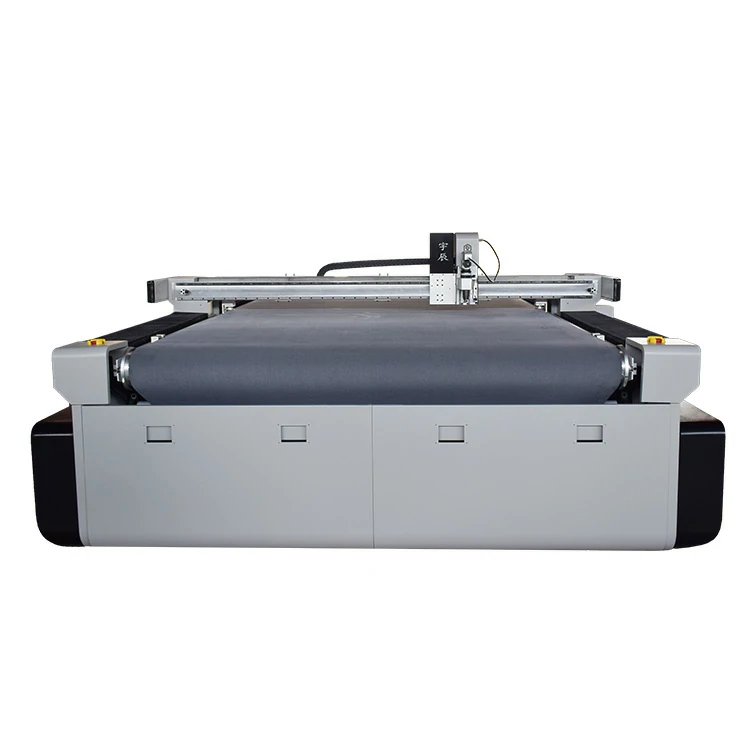Non-woven fabric cutting machines are designed to handle intricate designs or patterns with precision and efficiency. Here’s how they typically accomplish this:
- Computerized Control Systems: Many non-woven fabric cutting machines are equipped with computerized control systems that allow for the programming of intricate designs or patterns. Operators can input design specifications into the machine’s software, which then guides the cutting process with high accuracy. This ensures that complex designs or patterns are replicated faithfully on the fabric.
- CAD/CAM Integration: Non-woven fabric cutting machines often integrate with computer-aided design (CAD) and computer-aided manufacturing (CAM) software. This integration allows users to create intricate designs or patterns digitally and transfer them directly to the cutting machine. CAD/CAM software enables precise design manipulation, scaling, and customization, ensuring that intricate patterns are accurately translated onto the fabric during cutting.
- High-Precision Cutting Tools: Non-woven fabric cutting machines utilize high-precision cutting tools such as rotary blades, ultrasonic cutters, or laser cutters. These cutting tools are capable of achieving intricate cuts with sharp edges and precise contours, even on delicate or intricate designs. Advanced cutting mechanisms ensure clean and accurate cuts, allowing intricate patterns to be executed flawlessly.
- Automatic Registration Systems: Some non-woven fabric cutting machines feature automatic registration systems that ensure precise alignment of the fabric and cutting tools. non woven fabric cutting machine These systems use sensors or vision-based technologies to detect reference points or markers on the fabric and adjust the cutting path accordingly. Automatic registration systems enable the machine to maintain alignment throughout the cutting process, resulting in accurate replication of intricate designs or patterns.
- Variable Speed and Pressure Control: Non-woven fabric cutting machines often offer variable speed and pressure control options, allowing operators to optimize cutting parameters for different materials and designs. By adjusting cutting speed and pressure, operators can achieve optimal cutting results for intricate designs without damaging the fabric or compromising cutting quality.
- Multi-Layer Cutting Capabilities: Many non-woven fabric cutting machines are capable of cutting multiple layers of fabric simultaneously. This capability is especially useful for cutting intricate designs or patterns efficiently, as it reduces production time and ensures consistency across multiple fabric layers.
- User-Friendly Interface: Non-woven fabric cutting machines typically feature user-friendly interfaces that make it easy for operators to program and control cutting operations. Intuitive software interfaces allow operators to preview designs, adjust cutting parameters, and monitor cutting progress in real-time, facilitating the execution of intricate designs with minimal effort.
By incorporating these features and capabilities, non-woven fabric cutting machines can effectively handle intricate designs or patterns with precision and accuracy, making them ideal for various applications in industries such as apparel manufacturing, automotive interiors, and medical textiles.
